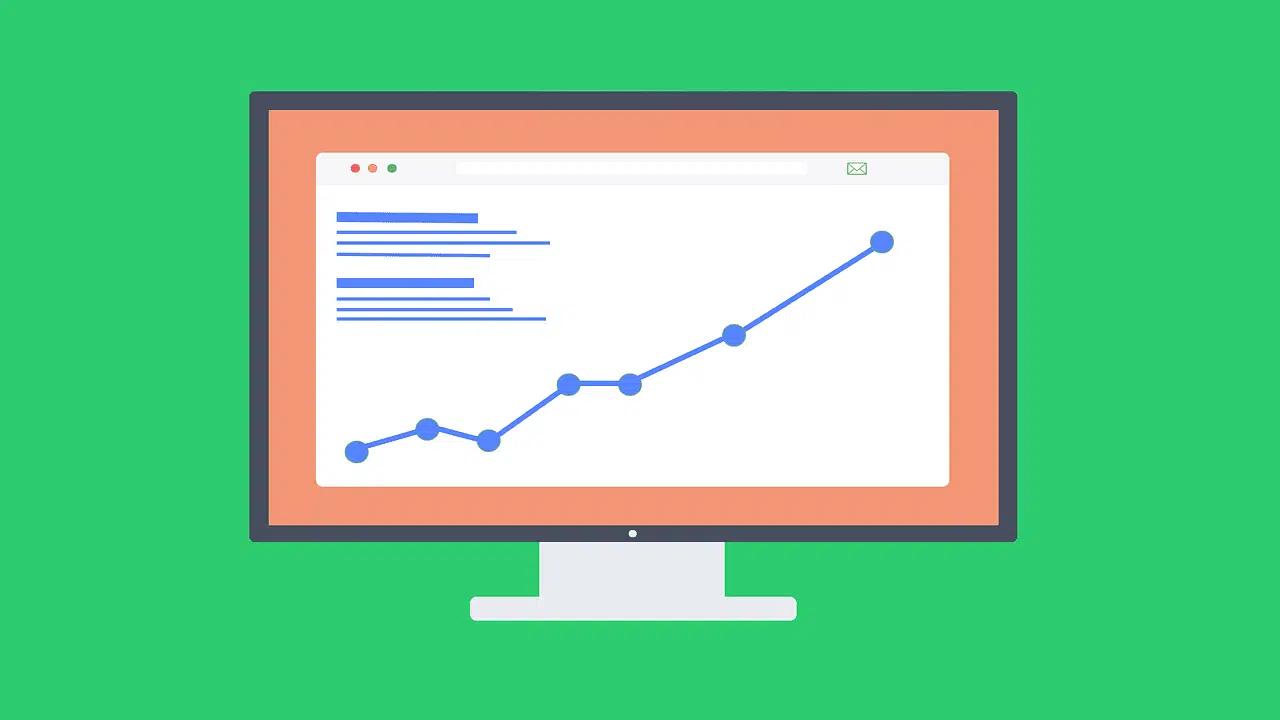As you scroll through your Instagram feed, you see it again: another ad for an online dropshipping course touting how easy it is to begin earning money in just a few short weeks. You can’t help but wonder if this dropshipping thing is as easy as it sounds. So, you do what any curious person would do. You Google, "Is dropshipping still profitable?" At the top of the search results, you see an article about the best apps for dropshipping. You click. This article will help you achieve your goals. It will explain whether dropshipping is still profitable in 2023 and teach you how to get started the right way. PagePilot's AI page builder can help you achieve your objective by making your online store stand out to customers. With its easy-to-use features, you can create stunning, high-converting pages even if you don’t know the first thing about web design.
What is a Dropshipping Business?

Dropshipping is an order fulfillment option that allows ecommerce businesses to outsource the processes of procuring, storing, and shipping products to a third party, typically a supplier. This fulfillment model commonly appeals to entrepreneurs seeking efficiency and low overhead; nevertheless, it can come at a cost, especially in terms of customer experience.
Dropshipping Explained
This guide will cover what dropshipping is and explore how this fulfillment method can work. We’ll also explore a few dropshipping alternatives that can potentially save you time, reduce your overhead, or simplify your business. In a dropshipping business model, you promote products and provide an online storefront.
How Dropshipping Works
When a customer places an order, you send the order to the drop shipper and inform the customer that the products are on their way. The rest of the physical fulfillment process is out of your hands. In some dropshipping agreements, you may also be responsible for customer service, while the dropshipping service handles the physical goods and fulfillment.
How Does Dropshipping Work?
The exact logistics of dropshipping depend on your arrangement, but the dropshipping process typically follows this general sequence: The seller signs an agreement with the dropshipper. Customer orders online. The seller receives the order. The customer receives an order confirmation. The seller forwards the order to the dropshipper.
Dropshipping Process & Pitfalls
The dropshipper ships the order, and the customer receives their product. Dropshipping may appeal to entrepreneurs looking to sell generic products, but it can limit opportunities to build a brand and differentiate products. Businesses that use dropshipping may end up competing on price, resulting in low margins.
Key Players in the Dropshipping Model
Some of the key players and their roles in detail, starting with the seller of record—in other words, your business.
Seller of Record
The dropshipping process starts with you. As the seller of record (SoR), you’re the individual identified as selling the product to the end consumer. You set the price, record the purchase as revenue, and assume responsibility for the sales tax on a particular sale. Even when a third party stocks and ships the items, you’re the seller of record because you own the products before they ship to the customer.
Manufacturers
Manufacturers make products to sell to wholesalers and retailers. You can purchase goods from manufacturers, but the bulk purchase amounts they require can be a barrier to starting or scaling your business. Some manufacturers may offer dropshipping services.
Wholesalers
In a typical product supply chain, wholesalers purchase goods from manufacturers and resell them to retailers at a slight markup. They function as middlemen; generally, they do not sell to the end consumers but may provide dropshipping services to retailers. Determine which dropshipping providers are right for you based on your:
- Business model
- Fulfillment requirements
- Other relevant factors
Related Reading
- Best Apps For Dropshipping
- How To Start Dropshipping For Free
- Where To Buy Dropshipping Products
- Is Amazon Dropshipping Profitable
- How To Find Dropshipping Products
Is Dropshipping Still Profitable?

In short, dropshipping remains a profitable business model. But it’s not 2016 anymore; success today looks different, and so does the work required to achieve it.
The Market Is Bigger Than Ever
The dropshipping market isn’t slowing down. It's projected to hit $476 billion globally within the next four years. A massive shift in consumer behavior fuels that growth: more people are shopping online, and they're expecting fast, niche, and convenient products, everything dropshipping is built to deliver.
Profit Margins Are Still Healthy
Most dropshippers earn 10% to 30% profit margins, depending on the niche, pricing strategy, and supplier reliability. That's solid when you're not holding inventory or dealing with warehousing costs. Conversion rates for dropshipping stores are, on average, 15% higher than those of traditional e-commerce sites, primarily due to more targeted marketing and product pages that encourage impulse purchases.
Low Risk, Low Investment
You don’t need $50k and a warehouse to get started. With the right supplier and a good ad strategy, you can validate products quickly without incurring massive capital investment in stock. That’s still one of the strongest selling points of dropshipping in 2025.
The Catch: It’s More Competitive Now
What’s changed is the bar for success. Dropshipping isn’t plug-and-play anymore. Relying on generic products, slow shipping from overseas, or copy-paste product pages? That’s a fast track to burnout. The winners today are treating it like a real business, investing in:
- Branding
- Customer experience
- Influencer marketing
- Data-driven product selection
A Lean, Demanding Business
Yes, dropshipping is still profitable, but it’s not a shortcut to passive income. Think of it as a lean ecommerce business model with lower upfront risk, but it still demands clever marketing, good supplier relationships, and a long-game mindset. The opportunity is real. But like any business, the results depend on how seriously you take it.
Accelerate Testing with AI Page Builder
PagePilot’s AI page builder will help you test products, ideas, and angles way faster than before. Simply provide our AI with a competitor/supplier URL, and we will create a high-converting product page using the information found on their website. Using our AI product image function, we will also enhance the visuals of the product, ensuring you're not competing with the same copywriting and product images as your competitors. Start a free trial and generate three product pages for free today (no credit card needed).
What Are the Advantages of Dropshipping?
No Inventory Management: Eliminate the Hassle of Handling Products
Dropshipping products eliminates the need to transform half of your home into a warehouse for inventory management. When a customer makes a purchase, the supplier handles all aspects of inventory management and order fulfillment, leaving you free to focus on tasks such as:
- Marketing
- Customer service
- Scaling your business
Low Barrier to Entry: Start Dropshipping Without Special Skills or Expertise
Part of what has made dropshipping such a popular business model is that you don't need a business degree or a lot of money to get started. Unlike traditional retail, which often requires a sizable investment in overhead, starting a dropshipping business without incurring inventory, shipping costs, or a physical storefront is a viable option. You only need a computer, an online storefront, and a solid understanding of how dropshipping works. Successful dropshippers act as intermediaries between customers and the supplier(s) whose products they choose to offer.
Low Startup Costs: Start Making Money Faster
Unlike traditional retail businesses, which require significant investment in inventory and storage, dropshipping allows you to start an e-commerce business with low startup costs and minimal investment. You only purchase products after making a sale, eliminating the need for large upfront expenditures. This reduces financial risk, making it easier for entrepreneurs to enter the market.
Flexibility: Enjoy the Freedom to Work When and Where You Want
Part of what makes the dropshipping opportunity so attractive to many store owners is that it offers a great deal of flexibility. Since there's no need to worry about inventory management or shipping, you can set your schedule at will. Dropshippers also enjoy the freedom of working from anywhere. The beauty of running an online business is that you can do things like market research in a coffee shop, on the beach, or from your home office.
Broad Product Offering: Sell What You’re Passionate About
Dropshipping enables you to launch an e-commerce business that sells a wide range of products. Whether you're interested in selling apparel, electronics, jewelry, or wall art, the possibilities are endless.
Disadvantages of Dropshipping
Dropshipping offers unparalleled accessibility for new entrepreneurs to start an online business. Nonetheless, this very accessibility comes with a dark side: intense competition. Because it’s so easy to get started, countless other companies flock to the same trending products and niches, creating a saturated market.
Combating Price Wars & Margin Squeeze
As a result, profit margins plummet as businesses compete to undercut one another to attract customers. The more you reduce prices, the harder it becomes to calculate profit margins that work for your store. Mitigate this problem by choosing the right products and selecting a dropshipping niche that’s not oversaturated.
Inventory Volatility: The Dangers of Dropshipping
For all its inventory management benefits, dropshipping exposes retailers to sudden changes in product availability. With suppliers fulfilling orders for multiple retailers, inventory levels can fluctuate unexpectedly, something that's less of an issue when you stock your products. Fortunately, many dropshipping apps give merchants options when a supplier's stock hits zero. For example, you could automatically remove a sold-out product or set a "Sold Out" label.
Shipping Complexities: The Hidden Costs of Dropshipping
Working with multiple suppliers can complicate the order fulfillment process. If a customer orders three items from three different suppliers, you’ll need to calculate separate shipping costs and taxes for each. The items may also arrive at other times. For dropshippers sourcing products from international suppliers, cross-border shipping can introduce additional complexity, including:
- Navigating tariffs
- Importing duties
Navigating International Shipping Challenges
This makes issues harder to resolve when things go wrong. One possible solution is to pass shipping costs and import taxes on to customers. Still, this may make your pricing less competitive. Understanding tariffs and Harmonized System (HS) codes is crucial for dropshippers working with international suppliers.
Understanding HS Codes and Import Duties
These codes determine what import duties apply to your products. Misclassified products can result in unexpected fees, customs delays, and dissatisfied customers. Use tools like Tariff Guide to identify the correct HS codes and applicable tariff rates when importing products into the U.S.
Supplier Reliability: Finding a Dropshipping Partner You Can Trust
Despite its advantages, dropshipping is not without challenges. One of the most significant hurdles is finding reliable suppliers, with 84% of e-commerce businesses citing this as an important issue. Supplier reliability has a substantial impact on inventory availability, shipping timelines, and overall customer satisfaction, making it a critical factor in achieving success.
Related Reading
- How To Use AI For Dropshipping
- How To Set Up A Dropshipping Business
- How To Find Winning Products For Dropshipping
- How Much Can You Make Dropshipping
- Dropshipping Business Ideas
- Best High Ticket Dropshipping Products
7 Tips for a Profitable Dropshipping Business

1. Select Your Niche Wisely
To run a successful dropshipping business, you must first choose a niche that you can explore without many hassles or troubles. Such a niche is usually something that you are already passionate about. This allows you to use your preexisting knowledge about the subject. You must also verify that your chosen niche has sufficient dropshipping suppliers to offer a diverse range of high-quality products to consumers at reasonable prices.
The Importance of Niche Selection
Selecting a niche that you are familiar with is crucial if you want to run a profitable dropshipping business. If you are having a hard time choosing what dropshipping niche to dive into, then you could conduct some market research of your own or read a blog about dropshipping business ideas. Choosing the right niche is the most crucial step when you start a dropshipping business.
2. Curate Your Product Offerings
When choosing what products to sell, product quality should be of paramount importance. This is because it is what determines how well your customers like the product. If you fail to deliver a good product on your eCommerce store, then you are unlikely to have good customer retention. To find such high-quality products, you will need to spend time reviewing and comparing different third-party suppliers to find the right fit. Ideally, the supplier or dropshipper has fast delivery times, great products, and a reasonable profit margin for you.
3. Differentiate Your Brand
Since other merchants on the web sell similar products to yours, it can often be challenging to differentiate them in a meaningful way. This is why you must focus on other aspects, such as packaging and marketing, to make the product stand out to the audience. One way to ensure a loyal customer base is by maintaining a consistent quality of products and services. This will differentiate your brand from competitors and solidify your image as a trusted and reliable merchant in the market.
4. Offer Combo Deals
To boost the number of products sold, consider offering products in a combo deal that presents a more appealing option to the consumer. Combo deals offer a better value proposition to customers, increasing your chances of earning money online by selling multiple products simultaneously. Even if you offer a simple product alongside the usual orders, you might see a spike in sales purely because of the combo offer. The slightly lower prices in combo deals are irresistible to potential customers looking to buy your products.
5. Leverage Social Media Platforms
The most effective way to attract customers without a large marketing budget is by establishing a social media community. There are minimal complexities or costs in starting an online business to build a following. Once you have a sizable audience following your social media pages, you can efficiently market new products to your newly established customer base.
Building an audience will also foster trust among consumers who are hesitant about trying new products.
6. Tap Into Local Markets
Many dropshipping stores have started and grown their business by simply catering to their local area’s requirements. Because they understand the needs of their locale the best, they can offer the finest products from the dropshipping industry. They are also able to keep shipping costs at a minimum due to the centralized location of all their customers. Marketing your products will also be easier, as traditional marketing methods are more cost-effective, and you are equipped with the knowledge of what works.
7. Continuously Expand Your Product Catalog
A dropshipping business cannot afford the stagnancy of its brand image. This is why you must constantly introduce new products to your online store. Due to the nature of the dropshipping model, you do not have to worry about inventory costs at all. Always ensure that your products remain within the niche to retain your target market and preserve your brand value. If you can bring in new products that are consistently of high quality, then you should have no problem running the business long-term.
Start a FREE Trial and Generate 3 Product Pages with Our AI Page Builder Today
PagePilot is a dropshipping tool that helps you create product pages quickly, allowing you to test products and ideas efficiently. Using AI, the software analyzes your competitor’s product pages and builds a new dropshipping page based on that information. The result is a page that has been optimized for SEO and conversion, helping you take the lead on your competition.
AI for Unique Product Imagery
PagePilot even features an AI tool that can create new product images for your listings, so you don’t have to use the stock photos your competitors are using. Start a free trial and generate 3 product pages for free today. No credit card needed.






